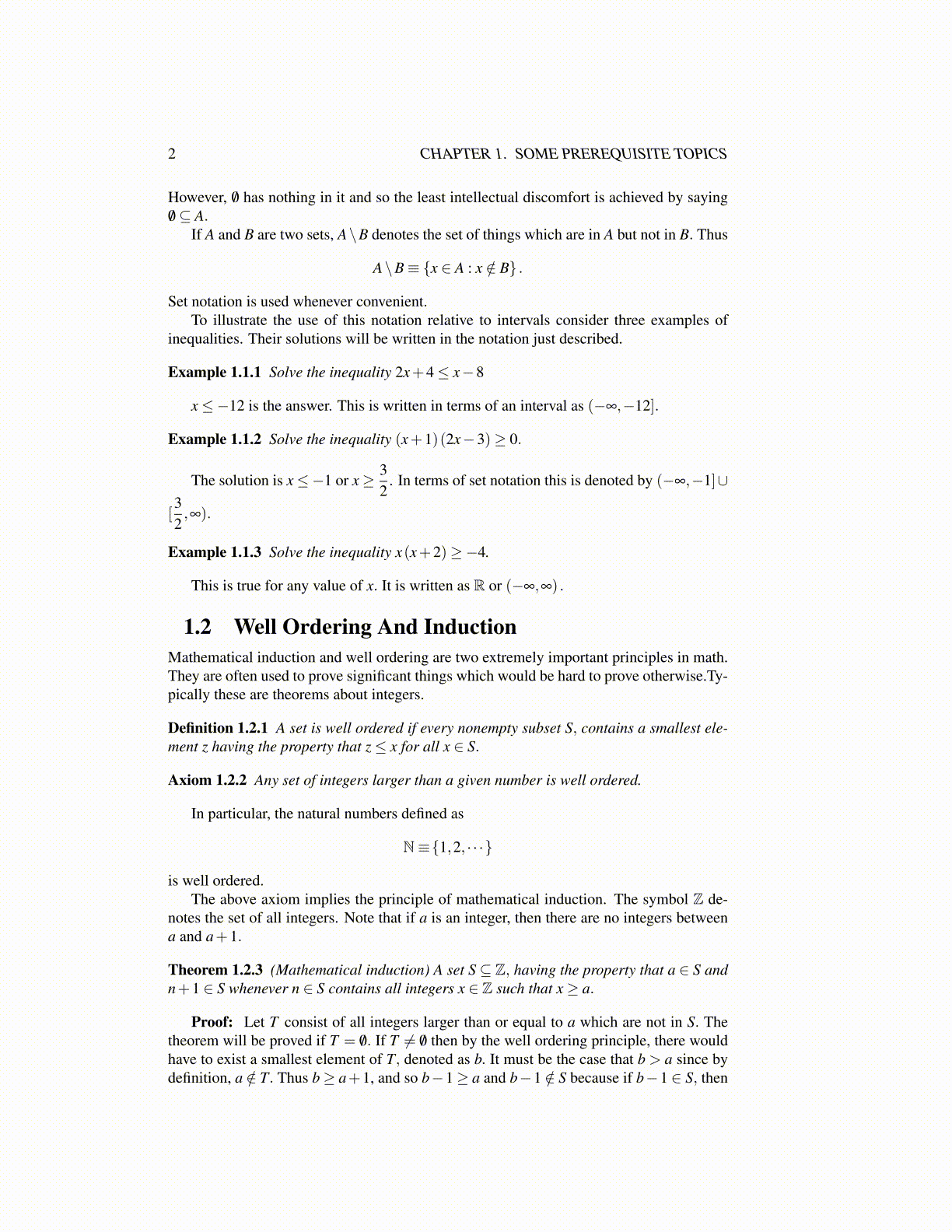
2 CHAPTER 1. SOME PREREQUISITE TOPICS
However, /0 has nothing in it and so the least intellectual discomfort is achieved by saying/0⊆ A.
If A and B are two sets, A\B denotes the set of things which are in A but not in B. Thus
A\B≡ {x ∈ A : x /∈ B} .
Set notation is used whenever convenient.To illustrate the use of this notation relative to intervals consider three examples of
inequalities. Their solutions will be written in the notation just described.
Example 1.1.1 Solve the inequality 2x+4≤ x−8
x≤−12 is the answer. This is written in terms of an interval as (−∞,−12].
Example 1.1.2 Solve the inequality (x+1)(2x−3)≥ 0.
The solution is x≤−1 or x≥ 32
. In terms of set notation this is denoted by (−∞,−1]∪
[32,∞).
Example 1.1.3 Solve the inequality x(x+2)≥−4.
This is true for any value of x. It is written as R or (−∞,∞) .
1.2 Well Ordering And InductionMathematical induction and well ordering are two extremely important principles in math.They are often used to prove significant things which would be hard to prove otherwise.Ty-pically these are theorems about integers.
Definition 1.2.1 A set is well ordered if every nonempty subset S, contains a smallest ele-ment z having the property that z≤ x for all x ∈ S.
Axiom 1.2.2 Any set of integers larger than a given number is well ordered.
In particular, the natural numbers defined as
N≡{1,2, · · ·}
is well ordered.The above axiom implies the principle of mathematical induction. The symbol Z de-
notes the set of all integers. Note that if a is an integer, then there are no integers betweena and a+1.
Theorem 1.2.3 (Mathematical induction) A set S ⊆ Z, having the property that a ∈ S andn+1 ∈ S whenever n ∈ S contains all integers x ∈ Z such that x≥ a.
Proof: Let T consist of all integers larger than or equal to a which are not in S. Thetheorem will be proved if T = /0. If T ̸= /0 then by the well ordering principle, there wouldhave to exist a smallest element of T, denoted as b. It must be the case that b > a since bydefinition, a /∈ T. Thus b≥ a+1, and so b−1≥ a and b−1 /∈ S because if b−1 ∈ S, then